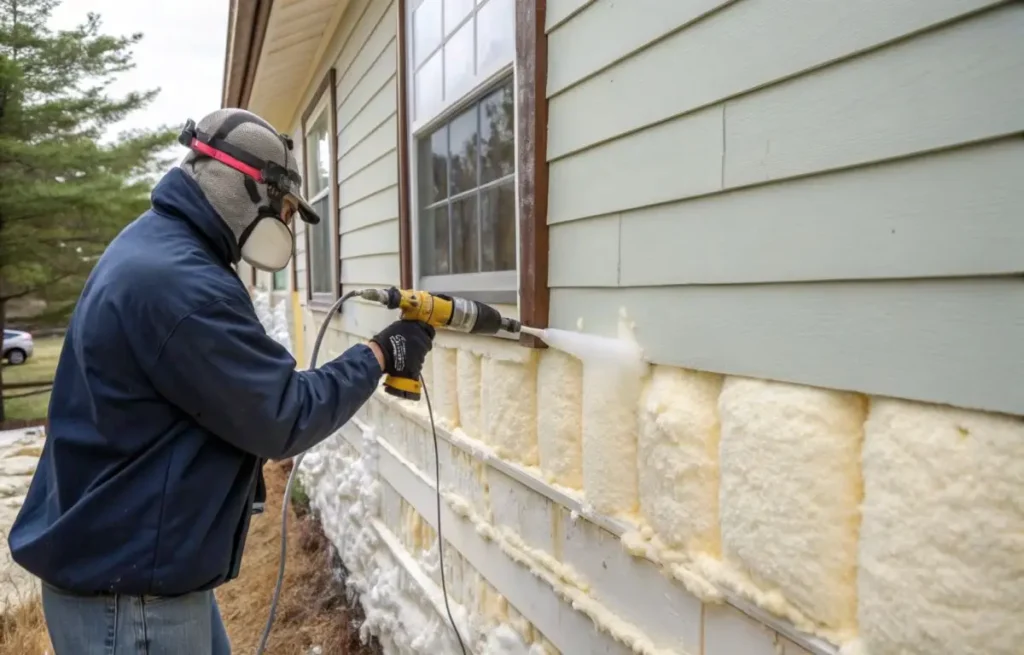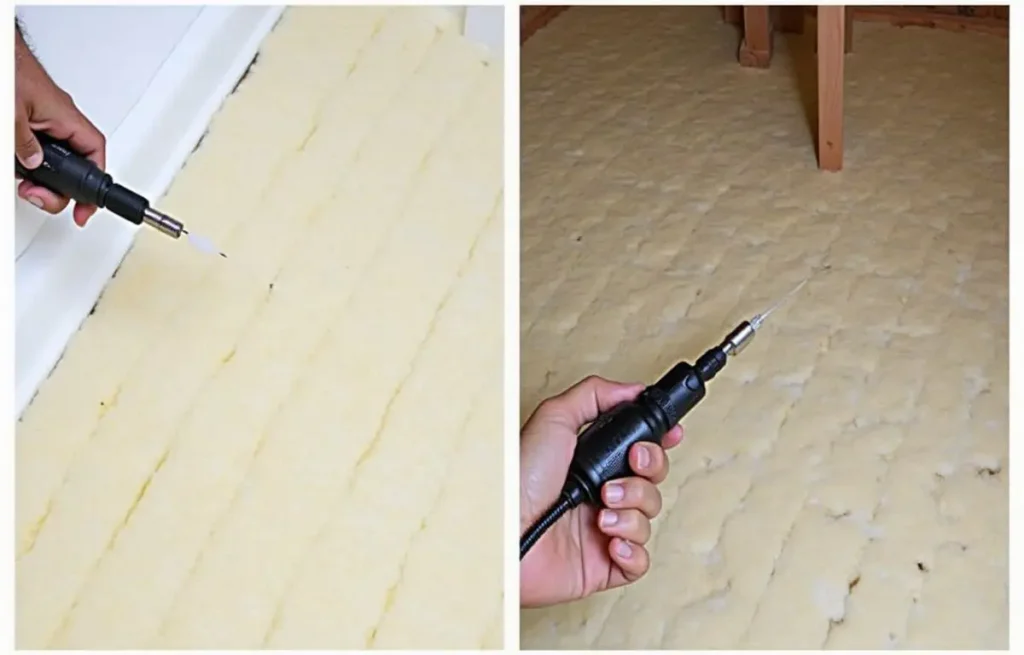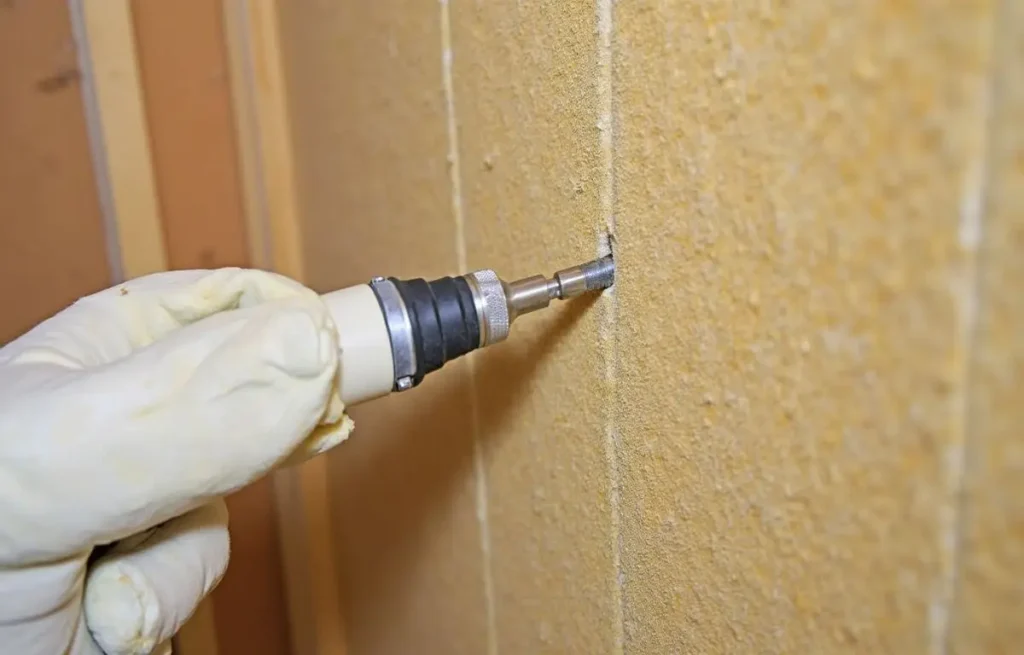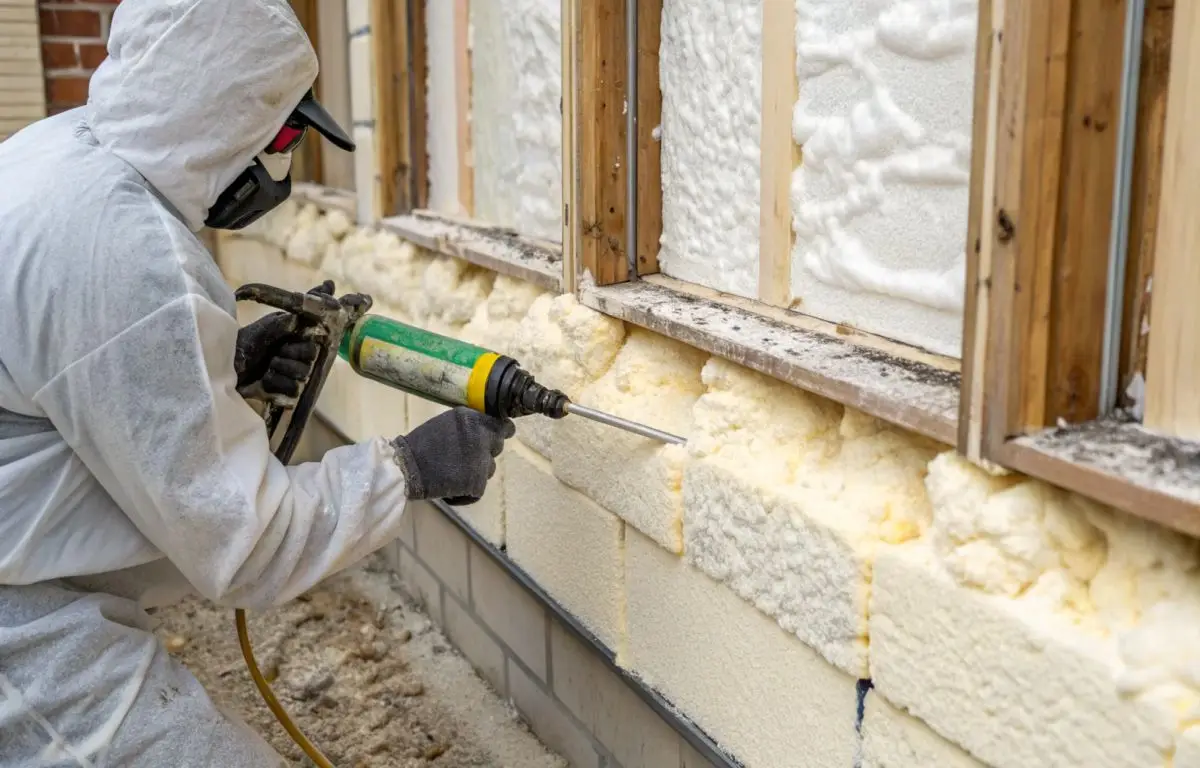Drafts are a common issue in many homes, particularly in colder seasons. They can make your home uncomfortable, raise energy bills, and lead to a less cozy living space. Foam insulation injection offers an effective solution to combat drafts, improving energy efficiency and creating a more comfortable environment. In this article, we’ll dive into how foam insulation injection works, its benefits, and why it’s a great option for your home.
What is Foam Insulation Injection?
Foam insulation injection is a technique used to enhance a home’s energy efficiency by injecting expanding foam into the interior walls. The foam fills gaps, cracks, and voids that allow air to pass through, significantly improving thermal resistance and preventing drafts. This process not only improves comfort but also boosts the home’s energy efficiency.
Statistical Insight: According to the U.S. Department of Energy, homes with proper insulation can reduce energy costs by 10-50% depending on the area and climate. Foam insulation, in particular, offers a superior solution to air leakage compared to traditional insulation methods, making it a smart investment for homeowners.
How Foam Insulation Helps Prevent Drafts
Drafts in homes are often caused by air leaks around windows, doors, and walls. Foam insulation works by filling these gaps and preventing air from entering or escaping your home. When injected, the foam expands to completely seal these openings, reducing unwanted air infiltration.
The Science Behind Foam’s Effectiveness
The expanding foam creates an airtight seal that blocks both cold winter winds and hot summer air from entering. This ensures a stable indoor temperature throughout the year. In fact, a study by the Building Science Corporation found that homes with spray foam insulation have a reduction in air infiltration by up to 80%, compared to homes without foam.
Pro Tip: If your home is older, it likely has cracks and gaps that are not easy to detect. Foam insulation is particularly useful here because it can seal these spaces that traditional insulation methods miss.
Benefits of Foam for Draft Prevention
Foam insulation offers superior performance when it comes to sealing gaps and cracks. Unlike fiberglass, which can leave tiny gaps, foam fills every small nook, preventing air from sneaking through.
Real-World Example: Comfort on a Budget
Take a typical example from a customer who installed foam insulation in a 2,000-square-foot home. They reported a significant reduction in their monthly utility bills—around 30%. Furthermore, the house maintained a more comfortable indoor temperature, eliminating cold spots that were prevalent in certain rooms.
The Benefits of Foam Insulation for Energy Efficiency

One of the main reasons homeowners choose foam insulation is its ability to reduce energy loss. Air leaks are the leading cause of heat loss in winter and heat gain in summer. Foam insulation blocks these leaks, ensuring your HVAC system doesn’t have to work overtime.
Energy Savings: More Than Just Lower Bills
According to the U.S. Environmental Protection Agency (EPA), proper insulation can save homeowners 15% or more on heating and cooling costs annually. By reducing the workload on your heating and cooling systems, foam insulation can significantly extend their lifespan, saving money on maintenance or early replacements.
Fact to Consider: Homes with foam insulation are more likely to maintain a consistent temperature, reducing the need for constant adjustments to thermostats.
Lower Your Energy Bills with Foam
By preventing drafts and sealing gaps, foam insulation reduces the amount of energy needed to heat or cool your home. A study by the Insulation Contractors Association of America (ICAA) found that homes with foam insulation can save up to 20% on annual energy bills, especially in climates with extreme temperature variations.
Actionable Tip: Improve Sealing Before Winter
For homeowners looking to improve energy efficiency in time for winter, installing foam insulation in areas like attics and basements can make a noticeable difference in keeping your home warmer without turning up the thermostat.
Foam Insulation: A Long-Term Solution for Energy Savings
While foam insulation might have a higher initial cost compared to traditional methods, its long-term benefits are clear. It significantly reduces energy consumption and improves comfort by maintaining consistent indoor temperatures.
Long-Term Payback Period
Many homeowners find that the savings on energy bills allow them to recover the installation costs within 3-5 years, depending on the size of the home and climate. Beyond cost savings, foam insulation also increases the overall value of your home, making it an appealing option for prospective buyers.
Installing Foam Insulation Injection: What to Expect

Installing foam insulation is an efficient process with minimal disruption to daily life. The job can typically be completed in a single day, depending on the size of the home and the areas being insulated. The process involves injecting foam into the wall cavities, where it expands to fill gaps and hardens to provide an airtight seal.
What Happens During Foam Installation?
First, a technician will conduct a thorough inspection of your home to determine where air leaks are present. Using specialized equipment, the foam is injected into small holes drilled in the walls, where it expands and fills cavities. The foam then hardens, sealing off any potential gaps that could allow drafts.
Personal Experience: A customer reported their home being noticeably warmer within hours of installation. After one season of heating and cooling, they saw a clear difference in their utility bills.
The Long-Term Impact of Foam Insulation
While the upfront costs of foam insulation installation can seem daunting, the long-term savings make it worthwhile. By blocking drafts and improving insulation, foam helps maintain a steady indoor climate, reducing the need for constant heating or cooling.
The Value of Consistency
One of the main advantages of foam insulation is its ability to create a more consistent temperature throughout your home. This leads to a higher level of comfort and prevents the cold spots or overheated areas that often come with other types of insulation.
Verified Study: The Department of Energy’s Energy Efficiency and Renewable Energy office found that homes with foam insulation maintain a more stable indoor temperature throughout the year, ensuring that you feel comfortable no matter the season.
Energy Savings with Foam Insulation
As the foam insulation blocks air leaks, your home’s heating and cooling systems are able to operate more efficiently. This reduces the amount of energy required to keep your home comfortable.
Long-Term Financial Benefits
By using less energy, your HVAC system won’t need to work as hard, leading to longer system lifespan and reduced repair or replacement costs. Many homeowners report an average savings of up to 30% on energy bills after installing foam insulation, making it a financially viable choice in the long term.
Why Foam Insulation is a Smart Investment for Homeowners
Though the initial cost can be higher than traditional insulation methods, foam insulation provides exceptional benefits that far outweigh the cost. Over time, the savings on energy bills and the increased comfort of your home make it a worthwhile investment.
Is Foam Insulation Injection Worth It for Your Home?

The decision to install foam insulation should be based on your home’s specific needs. If you’re dealing with constant drafts or high energy bills, foam insulation can help solve these problems while making your home more comfortable.
Can Foam Insulation Help Older Homes?
Older homes often suffer from outdated insulation, with gaps that allow drafts to enter. Foam insulation is an ideal solution for these homes as it can fill even the tiniest gaps and provide a more effective seal than traditional insulation.
Homeowner Tip: If your home is older, it’s especially important to check for hidden gaps and cracks that could be letting air in. Foam insulation can fill these spaces and restore your home’s energy efficiency.
How Foam Insulation Improves Comfort in Your Home
One of the most noticeable benefits of foam insulation is the consistent indoor temperature it creates. Homes with foam insulation tend to be more comfortable in all seasons, eliminating the need for frequent thermostat adjustments.
Creating a Comfortable Living Space
With foam insulation, your home stays warmer in winter and cooler in summer, without the constant fluctuation in temperature. This creates a more pleasant and comfortable living environment throughout the year.
Conclusion
Foam insulation injection is a powerful tool for homeowners looking to improve their home’s energy efficiency, eliminate drafts, and enhance overall comfort. With its ability to reduce heating and cooling costs, eliminate cold spots, and create a consistent indoor temperature, it’s clear why this method is quickly becoming a preferred choice for draft prevention. By investing in foam insulation injection, you’re not just upgrading your home’s insulation — you’re making a smart, long-term investment in your comfort and savings.
FAQs
1. What is foam insulation injection?
Foam insulation injection is the process of injecting expanding foam into walls to seal gaps, prevent drafts, and improve energy efficiency.
2. How does foam insulation prevent drafts?
The expanding foam fills cracks and gaps within walls, creating an airtight barrier that stops drafts and prevents air leakage.
3. Is foam insulation injection a permanent solution?
Yes, foam insulation is a long-lasting solution that continues to block drafts and enhance energy efficiency for years.
4. Can foam insulation reduce energy bills?
Yes, by sealing drafts and improving insulation, foam injection can significantly reduce energy consumption, leading to lower utility bills.
5. How long does foam insulation installation take?
The installation process typically takes a few hours, with minimal disruption to your daily routine.
People Also Read
How To Choose The Best Wall Lights For A Black And White Interior
Building a Retaining Wall: How Long It Takes and What You Need

